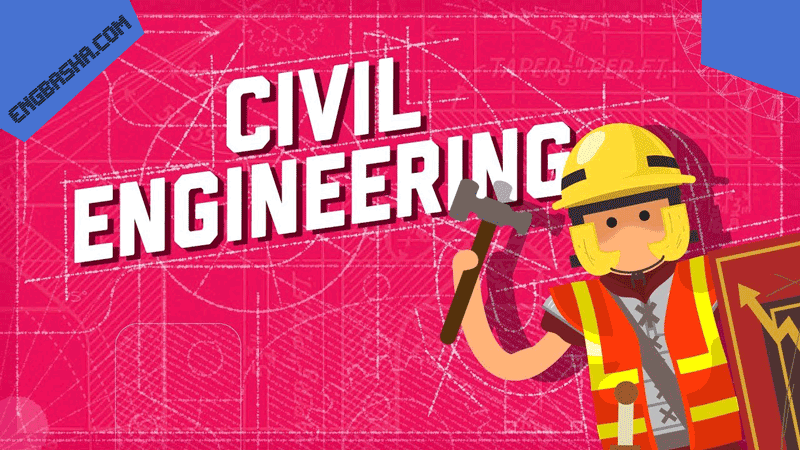Civil engineering is a professional engineering discipline that deals with the design, construction, and maintenance of the physical and naturally built environment, including public works such as roads, bridges, canals, dams, airports, sewerage systems, pipelines, structural components of buildings, and railways.

Civil engineering is traditionally broken into a number of sub-disciplines. It is considered the second-oldest engineering discipline after military engineering, and it is defined to distinguish non-military engineering from military engineering. Civil engineering takes place in the public sector from municipal through to national governments, and in the private sector from individual homeowners through to international companies.
Civil engineers typically possess an academic degree in civil engineering. The length of study is three to five years, and the completed degree is designated as a bachelor of technology, or a bachelor of engineering. The curriculum generally includes classes in physics, mathematics, project management, design and specific topics in civil engineering. After taking basic courses in most sub-disciplines of civil engineering, they move on to specialize in one or more sub-disciplines at advanced levels. While an undergraduate degree (BEng/BSc) normally provides successful students with industry-accredited qualification, some academic institutions offer post-graduate degrees (MEng/MSc), which allow students to further specialize in their particular area of interest.
There are a number of sub-disciplines within the broad field of civil engineering. General civil engineers work closely with surveyors and specialized civil engineers to design grading, drainage, pavement, water supply, sewer service, dams, electric and communications supply. General civil engineering is also referred to as site engineering, a branch of civil engineering that primarily focuses on converting a tract of land from one usage to another. Site engineers spend time visiting project sites, meeting with stakeholders, and preparing construction plans. Civil engineers apply the principles of geotechnical engineering, structural engineering, environmental engineering, transportation engineering and construction engineering to residential, commercial, industrial and public works projects of all sizes and levels of construction.
Coastal engineering is concerned with managing coastal areas. In some jurisdictions, the terms sea defense and coastal protection mean defense against flooding and erosion, respectively. The term coastal defense is the more traditional term, but coastal management has become more popular as the field has expanded to techniques that allow erosion to claim land.
Construction engineering involves planning and execution, transportation of materials, site development based on hydraulic, environmental, structural and geotechnical engineering. As construction firms tend to have higher business risk than other types of civil engineering firms do, construction engineers often engage in more business-like transactions, for example, drafting and reviewing contracts, evaluating logistical operations, and monitoring prices of supplies.
Earthquake engineering involves designing structures to withstand hazardous earthquake exposures. Earthquake engineering is a sub-discipline of structural engineering. The main objectives of earthquake engineering are to understand interaction of structures on the shaky ground; foresee the consequences of possible earthquakes; and design, construct and maintain structures to perform at earthquake in compliance with building codes.
Environmental engineering is the contemporary term for sanitary engineering, though sanitary engineering traditionally had not included much of the hazardous waste management and environmental remediation work covered by environmental engineering. Public health engineering and environmental health engineering are other terms being used.
Environmental engineering deals with treatment of chemical, biological, or thermal wastes, purification of water and air, and remediation of contaminated sites after waste disposal or accidental contamination. Among the topics covered by environmental engineering are pollutant transport, water purification, waste water treatment, air pollution, solid waste treatment, recycling, and hazardous waste management. Environmental engineers administer pollution reduction, green engineering, and industrial ecology. Environmental engineers also compile information on environmental consequences of proposed actions.
Geotechnical engineering studies rock and soil supporting civil engineering systems. Knowledge from the field of soil science, materials science, mechanics, and hydraulics is applied to safely and economically design foundations, retaining walls, and other structures. Environmental efforts to protect groundwater and safely maintain landfills have spawned a new area of research called geoenvironmental engineering.
Identification of soil properties presents challenges to geotechnical engineers. Boundary conditions are often well defined in other branches of civil engineering, but unlike steel or concrete, the material properties and behavior of soil are difficult to predict due to its variability and limitation on investigation. Furthermore, soil exhibits nonlinear (stress-dependent) strength, stiffness, and dilatancy (volume change associated with application of shear stress), making studying soil mechanics all the more difficult. Geotechnical engineers frequently work with professional geologists and soil scientists
Structural engineering is concerned with the structural design and structural analysis of buildings, bridges, towers, flyovers (overpasses), tunnels, off shore structures like oil and gas fields in the sea, aerostructure and other structures. This involves identifying the loads which act upon a structure and the forces and stresses which arise within that structure due to those loads, and then designing the structure to successfully support and resist those loads. The loads can be self weight of the structures, other dead load, live loads, moving (wheel) load, wind load, earthquake load, load from temperature change etc. The structural engineer must design structures to be safe for their users and to successfully fulfill the function they are designed for (to be serviceable). Due to the nature of some loading conditions, sub-disciplines within structural engineering have emerged, including wind engineering and earthquake engineering.
Design considerations will include strength, stiffness, and stability of the structure when subjected to loads which may be static, such as furniture or self-weight, or dynamic, such as wind, seismic, crowd or vehicle loads, or transitory, such as temporary construction loads or impact. Other considerations include cost, constructability, safety, aesthetics and sustainability.



